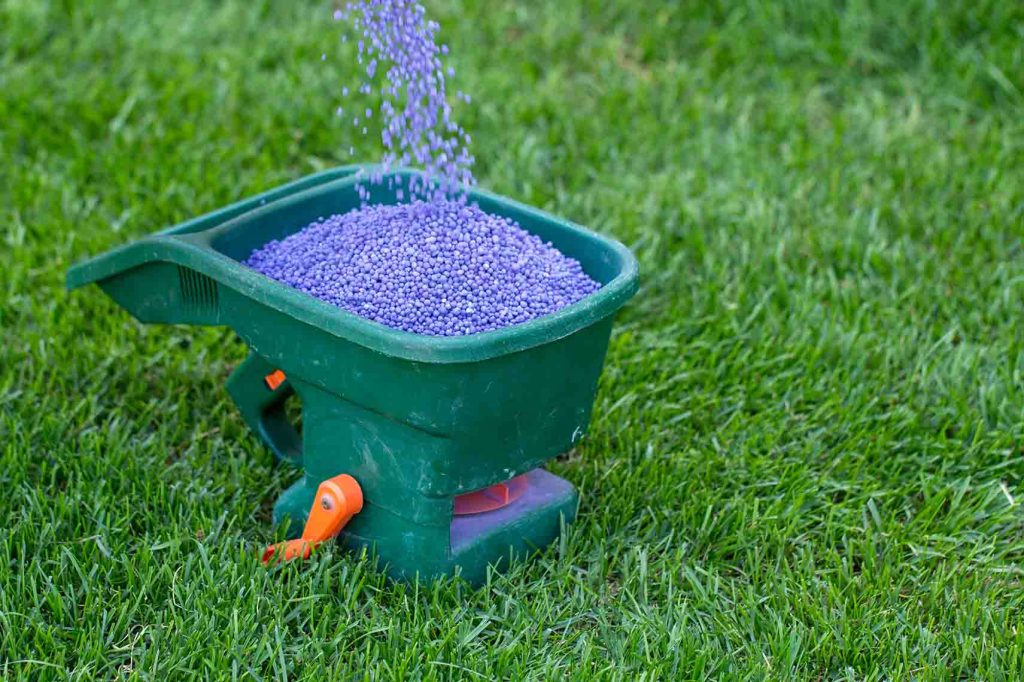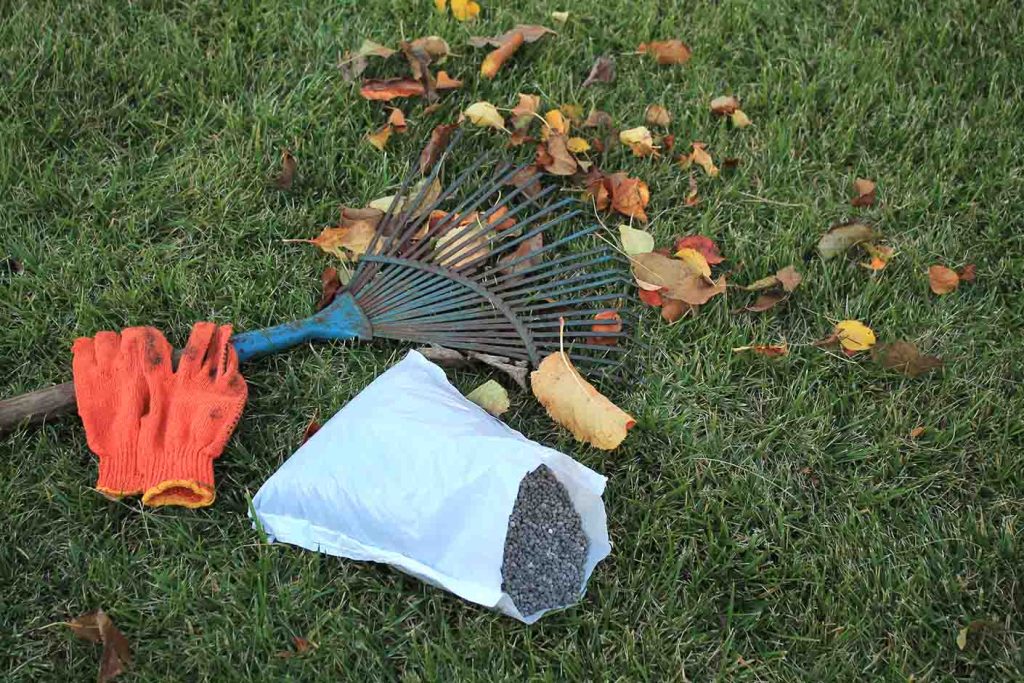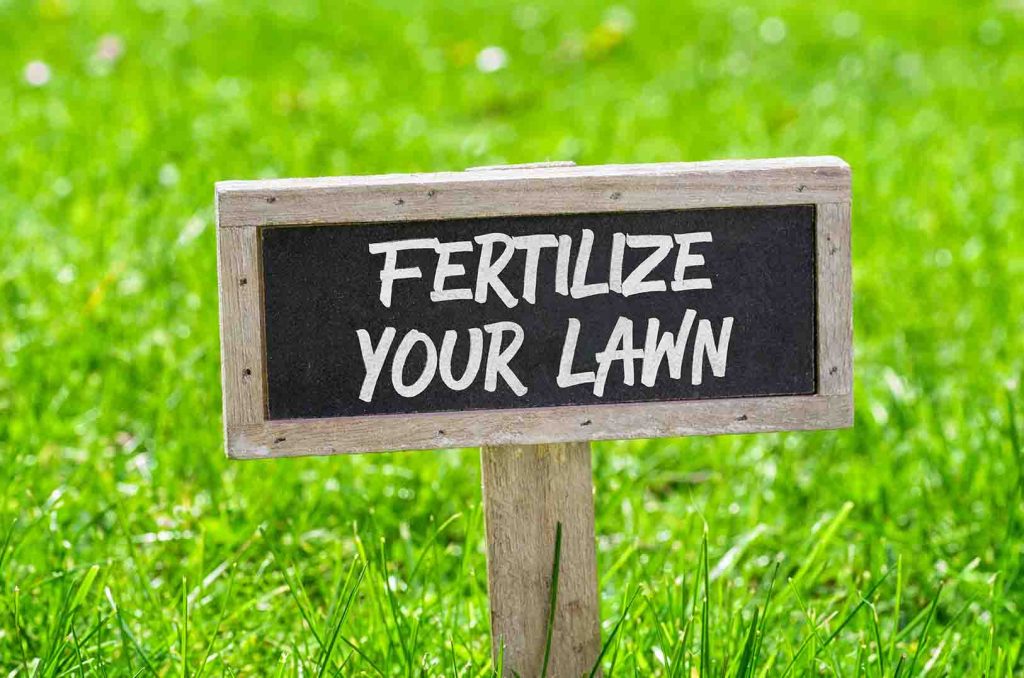As a homeowner, you want your lawn to be lush, healthy, and green. One of the most essential aspects of lawn care is fertilization. With so many options available, however, it can be challenging to choose the right type of fertilizer for your lawn. Slow-release fertilizers are a fantastic choice for homeowners who want to provide their lawns with essential nutrients over an extended period.
The team at Tuxedo Yard Care has put together this blog to tell you everything you need to know about slow-release fertilizers and help you determine if they are right for your lawn!
How Does Slow-Release Fertilizer Work?

A slow-release fertilizer is a type of lawn fertilization that releases nutrients into the soil gradually over time. Unlike fast-acting or liquid fertilizers, slow-release fertilizers don’t release all their nutrients at once, but rather in a steady stream for a more extended period. Slow-release fertilizers typically come in a granular form, and those granules slowly release the nutrients they contain as they deteriorate and seep into the soil.
Slow-release fertilizers use different types of nitrogen chemicals to achieve their slow-release effect. Nitrogen is crucial for lawn care because it promotes growth and keeps grass looking green and healthy, and it is the most important nutrient of the 3 major nutrients in fertilizers (nitrogen, phosphorus, and potassium — the NPK ratio). While nitrogen is essential for healthy lawns, it can also be washed away by rain or irrigation. Slow-release fertilizers work by coating the nitrogen particles, preventing them from dissolving too quickly. As a result, the nutrients are released slowly and gradually, providing your lawn with a continuous supply of essential nutrients.
Benefits Of Slow-Release Fertilizers

One of the key benefits of slow-release fertilizers is that they release nutrients gradually, meaning you don’t have to apply fertilizers as frequently as you would with fast-release options. This saves time, money, and effort. They promote and focus on soil health rather than feeding the grass directly, which is essential for sustained lawn health. Applying slow-release, granular fertilizers is usually considered safer and more effective if your goal is to improve soil quality rather than see a quick burst of green grass growth. Below are some of the biggest benefits of slow-release fertilizers:
- Improved soil quality
- Eco-friendly options
- Fewer applications
- Less fertilizer burn
- Balanced nutrients
- Cheaper to purchase
- Easier to store
- Longer shelf life
Are There Any Downsides?
It is important to remember that slow-release fertilizers are not the perfect option for everyone. As important as it is to improve long-term soil health with granular fertilizers, immediate grass growth will not be achieved with these types of fertilizers. People who are hoping to see immediate results would be better off using a liquid, fast-acting fertilizer for their lawn.
Granular fertilizers also contain differing nutritional content in each granule. This makes it difficult to guarantee that you are evenly distributing minerals and nutrients to your lawn, which can lead to patchy and uneven growth. Similarly, the granules can sometimes be difficult to monitor and apply evenly because they can easily bunch together or become displaced from foot traffic or even just the wind. This issue can also cause uneven grass growth. Slow-release fertilizers are best used by people who are patient and have the time to apply them carefully.
Types Of Slow-Release Fertilizers

There are various types of slow-release fertilizers to choose from, with each having distinguishing features. The release of nitrogen is what determines how quickly your grass will grow, and synthetic slow-release fertilizers have different nitrogen compounds that affect the soil differently. Below are some examples of the most common types of nitrogen you will see on the labels of slow-release fertilizers:
- Urea Formaldehyde: These fertilizers are created by polymerizing formaldehyde and urea. They can last up to 3 months and are suitable for use in cooler, drier climates.
- Methylene Urea: These release nutrients over a more extended period than urea formaldehyde, typically lasting anywhere from 3-9 months.
- Sulfur-Coated Urea: This type is coated in sulfur, which breaks down slowly, releasing the nutrients over time. They are ideal for soils with high pH levels.
- Polymer-Coated Urea: These fertilizers are coated in a material that controls the rate of nutrient release, making them an excellent choice for use in a wide range of climates.
The types of slow-release fertilizers listed above are synthetic products that are designed to release nutrients slowly. Organic fertilizers (compost, manure, bone meal, corn gluten meal, etc.) can also be considered slow-release fertilizers. These options also aim to improve long-term soil health rather than feed the roots of grass directly. Organic fertilizers are often used in conjunction with synthetic fertilizer types.
Slow-Release Fertilizer vs. Controlled-Release Fertilizer

While they may sound similar, slow-release fertilizers and controlled-release fertilizers are two different things. Slow-release fertilizers work by coating nitrogen particles to release nutrients over an extended period of time that is affected by rainfall, climate, and other factors. It is difficult to determine exactly when the nutrients in slow-release fertilizers will be fully absorbed into the soil.
Controlled-release fertilizers are pre-coated with a specific material that controls the release of nutrients to the soil. This design ensures that all the nutrients are released at the same time, making it a much quicker-acting fertilizer. Controlled-release fertilizers are often suitable for lawns in cooler climates. They have their benefits, but they are not as long-lasting as slow-release fertilizers and need to be applied more frequently.
When To Apply Slow-Release Fertilizers

When it comes to slow-release fertilizers, timing is everything. It’s essential to apply them at the right time to ensure that your lawn gets the nutrients it needs. Generally, the best time to apply slow-release fertilizer is in early spring before your lawn starts actively growing. This will provide your lawn with the essential nutrients it needs to get off to a healthy start. For optimal growth early in the season, it is best to apply granular fertilizer 4-6 weeks prior to when you expect grass growth.
It is also advisable to apply a slow-release fertilizer in fall to help your lawn prepare for the winter months. Slow-release fertilizers will not stress your grass before dormancy, which is crucial to preserving lawn health and soil quality in the colder months. However, it’s essential to avoid applying fertilizer during the heat of the summer, as this can scorch your lawn and potentially damage it if applied improperly.
Applying Slow-Release Fertilizer To Your Lawn

Before applying slow-release fertilizers, check if the soil pH is suitable for the type of fertilizer you want to use. While slow-release fertilizer is designed to keep soil fertility levels in balance, it’s still best to test your soil with a commercial tester kit. Once you have tested the soil and determined which slow-release fertilizer to use, follow the recommended dosage instructions on the fertilizer label. It’s best to use a spreader to ensure even distribution of the granules across the lawn. To prevent uneven patches, make sure you overlap your application with a second pass.
Most importantly, granular fertilizers MUST be watered into your lawn in order to start working! If you forget this step, the granules will just sit atop your lawn where they can easily become displaced before having the chance to be absorbed. To avoid any such issues, it is always a good idea to consult with a professional company like Tuxedo Yard Care! Give us a call today for a free quote on our fertilization services in northern Utah!



